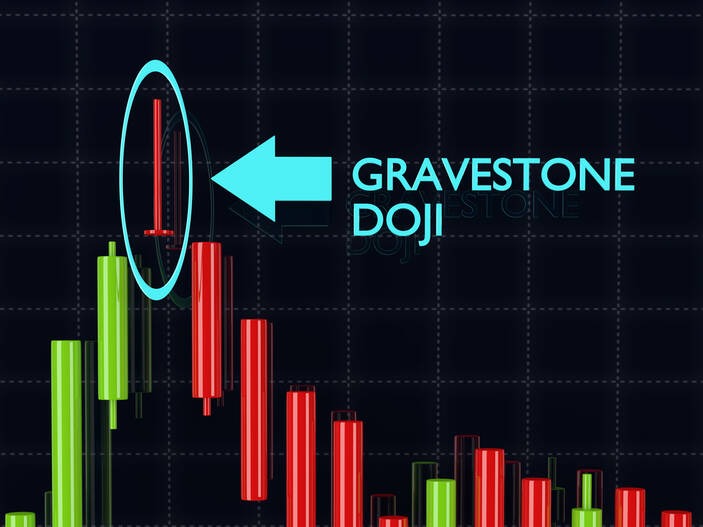Have you ever thought about the forex divergence and how to trade it effectively? Why are traders from all over the world obsessed with Divergence in Forex? Whether you’ve just stepped into the ever-evolving world of Forex or you’ve gotten some valuable experience, it is crucial to understand all the patterns and strategies in this industry that can provide you with profits.
One of these trading patterns, or as someone refers to it as “concepts”, is forex divergence. Many traders want to learn all there is to know about divergence patterns forex has to offer because it has a lot of impact on traders’ success.
However, what does the term “divergence” really mean? Why is it so crucial to know all about it if you are eager to achieve your trading goals in the most significant, decentralized market, such as the Forex market? Let’s get to know all the essentials of it!
What is Divergence?
Before learning all the secrets of forex divergence and how it can improve your trading success, in the long run, it’s crucial to know what it represents and what it tells you about the price since there is a lot of speculation about it.
Divergence means when both the price and indicator tell the trader numerous different things. In ideal circumstances, traders are looking for confirmation to enter traders and while in trades. Confirmation is once the indicator and price, or even multiple indicators, tell the same thing to a trader.
In other words, forex divergence represents a situation when the price of a particular currency pair moves in one direction while the indicator of a trend is moving in the opposite direction. With Divergence, you can expect either positive or negative signals.
Positive and negative Divergence
Positive Divergence signals a move higher in the price of the asset. It means that this Divergence indicates a price that is able to start moving higher soon. This Divergence occurs when the price moves lower than the technical indicator.
Negative Divergence indicates a move lower in the asset. It points to lower prices in the future and occurs once the price moves much higher. However, the technical indicator is either moving lower or showing bearish signals.
For those unaware of it, bearish divergences happen once prices rise to an entirely new high. However, the oscillator is able to muster a high that is lower than exhibited in a past rally.
What does the forex divergence tell you?
For those wondering what Divergence in Forex is and what it tells you, it is crucial to observe forex divergence in technical analysis as an indicator that may have a positive or negative price movement.
Forex traders worldwide choose to use Divergence to assess the underlying momentum in the price of assets and assess the possibility of a price reversal. Momentum divergence means the price deviation and volume shown as a continuation of a trend, excluding the necessity of momentum to assist the move.
Understanding divergence better
A divergence forms on a chat once the price makes a higher high, even though the indicator you are using makes a lower high. Once your price and indicator are out of sync, it only implies that something worth attention is happening on your chart.
But, it is not so obvious only by observing your price charts. Essentially, a divergence happens once your indicator doesn’t agree with price action. So, what about the more advanced concepts of forex divergence? Getting to know what they are and how to trade them is highly beneficial.
Suppose investors want to plot oscillators such as RSI on a price chart. In a situation where the particular stock is rising and, thus, creating new highs, the RSI will also reach new highs on an ideal occasion.
On the other hand, if RSI starts making lower highs while the stock is making new highs, the price uptrend could weaken, and it is a negative divergence. Positive Divergence, as explained above, means the opposite situation.
The RSI divergence strategy is the best traders’ choice.
The RSI Forex divergence strategy works well with price action rules. Hidden Divergence is a strong predictor of a trend change or a trend continuation. Regular divergences work on all factors. However, RSI or Relative Strength Index is one of the most effective.
It compares the average loss and gains over a certain period. Here is one example: Suppose you set RSI to 16. It will be compared the bullish candles and the bearish candles over the past 16 candles. Thus, when the Relative Strength Index is high, you should expect more significant and bullish candles over the previous 16.
Convergence divergence forex – what is the difference?
When it comes to covergence divergence forex terms. It is essential to know that they describe the direct relationship between two prices, trends, or indicators. Both refer to how these relationships move.
On the other hand, Divergence indicates that two trends are moving further apart from one another, while convergence shows how they move closer together. So once you are thinking about Divergence and convergence, you will know what it is all about.

How can you trade Divergence most efficiently?
If you were wondering how can you trade Divergence the best, it’s essential to know that it doesn’t always lead you to a strong reversal. After a divergence, in often situations, the price enters a sideways consolidation.
Remember that a divergence only signals an inevitable loss of momentum. However, it doesn’t mean it warns of a complete trend shift. To avoid unnecessary trade entries, it’s also recommended to consider other confirmation tools and criteria.
A divergence, without all that, could be something that isn’t enough and may lead to erroneous results if you don’t include other tools and criteria that we’ll explain. It’s like any other strategy if you don’t use other beneficial factors to fortify your strategy enough.
To trade divergences successfully, we have provided you with nine crucial steps you need to take.
1. Enable a good formation of the price
Make sure that the price is either formed on the following:
- Double Top
- Double Bottom
- Higher than the previous high,
- Lower low than the previous low
Forming the price based on the criteria above is essential if you want a divergence to exist. Don’t look at an indicator unless one of these scenarios has happened. If nothing, then it’s not a Forex divergence.
2. Draw lines on successive bottoms and tops
After doing the first step, you’ll get to see one of the following four things:
- A higher-high
- A flat high
- A lower low
- A Flat low
So, it is crucial to draw a line backward from that low or high to the previous low or high and make sure that it is on successive major tops/bottoms.
3. Connect bottoms and tops exclusively
It would be best to connect the tops when you get to see two swing highs that are finally established. In case two lows are made, you should consider connecting the bottoms.
4. Watch the price closely.
After connecting either two bottoms or two tops with a trend line, you need to look at your chosen technical indicator and compare it to price action. Keep in mind that some indicators such as forex MACD divergence or Stochastic include multiple lines all up to each other.
5. Don’t give up on your swing highs and lows.
If you choose to draw a line connecting two highs in price, it is crucial to draw a line connecting the two highs on the indicator. It is the same with connecting two lows in the price. You have to draw a line that connects two lows on the indicator since they all have to match!
6. Price and indicator swings should be vertically aligned.
You need to keep in mind the highs and lows you identify on the indicator: they must be vertically aligned with the price highs or lows! Don’t forget to maintain vertical alignment with the price’s swing lows and highs with the indicator’s swing lows and highs.
7. Observe the slopes
It’s essential to understand that the forex divergence exclusively exists if the slope of the line connecting the indicator bottoms and tops is different from the slope of the line connection price bottoms/lows.
Make sure that one of these slopes is either:
- Flat (flat)
- Ascending (rising)
- Descending (falling)
8. If things don’t work out well, try with the next one.
In case you spot any type of Divergence. However, the price has managed to reverse and move in one particular direction. It should be considered played out.
Thus, you have missed your chance in this case, and all you’re able to do is wait for another swing high/low to form and commence your divergence search again.
9. Look for divergences on 1-hour charts or more extended ones.
Since divergence signals tend to be more accurate in the more extended time frames, we advise you to look for divergences on 1-hour charts or more extended. When it comes to divergences in shorter time frames, they will occur more frequently.
However, these divergences will be less reliable than those on longer time frames. Other traders tend to use faster charts, such as a 15-minute chart. According to our experts’ opinion, there’s exceptionally much noise when it comes to these frames, so we choose to stay away from them.
Summary
Forex divergence is significant and influential once you know how to use it and trade it properly. If you follow these nine rules for trading forex divergence like a professional, you will significantly increase your chances of a divergence setup that will result in a profitable trade. Good luck on your path to success in the Forex market!
















